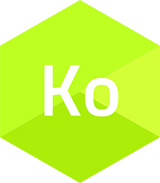Graphiti – adsorbenter med cellulosa och grafen i förebyggande konstbevaring
Resultat
Luftföroreningar inomhus är ett allvarligt problem inom konstvård och konstbevaring där konstverk i sig utgör en källa till föroreningar. Föroreningarna påskyndar nedbrytningen av konstföremål och kan leda till permanent förlust av ovärderliga föremål. För att bekämpa detta används adsorbenter i lagringslösningar för konstverk för att fånga upp föroreningarna. Fram tills nu har istället mestadels, och dåligt fungerande, aktivt kol använts – vilket också anses svårt att använda av konservatorer.
Syftet med projekten var att introducera grafen i en ny cellulosabaserad adsorbent för konstbevaring för att öka prestandan och förbättra egenskaper som är kritiska i materialproduktionen. Grafen användes för att ändra ytegenskaperna hos adsorbenten, vilket ökar variationen av gasformiga föroreningar som kan fångas upp och för att underlätta materialproduktionen genom att erbjuda en ny väg för att kontrollera porositeten hos skummet, vilket underlättar avvattningssteget genom en flockning-koagulering mekanism.
Grafen introducerades framgångsrikt i materialet och presterade till en början i nivå med den ursprungliga materialdesignen. Avvattningssteget minskade med 6 % på grund av grafenets koaguleringsförmåga. Den unika bildningen av porstrukturen i materialmatrisen genom inblandning av flocknings-koagulationsmekanism visade måttlig förbättring i adsorptionsprestanda för testade modellsubstanser såsom toluen.
De mest lovande resultaten för potentiella framtida projekt är förbättringen av mekaniska egenskaper med grafen. Projektet belyser möjligheterna att använda grafen, i kombination med nya tillsatser, för att frigöra dess fulla potential inom föroreningssanering.


